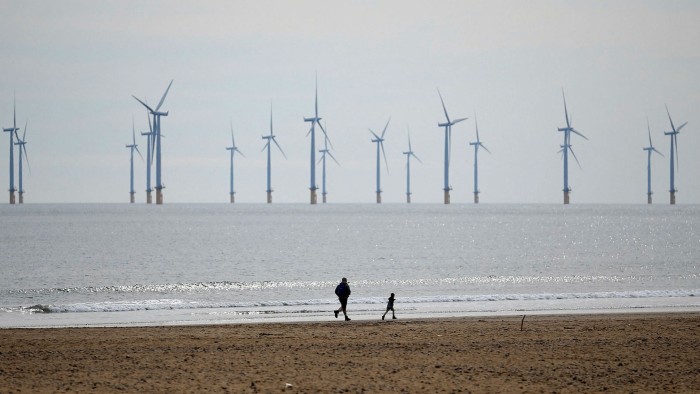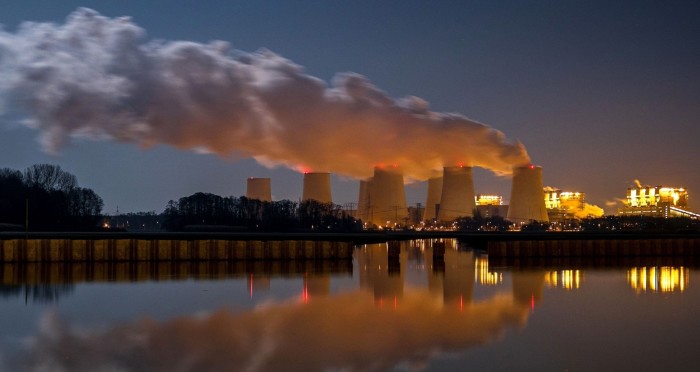Business can be a force for change on climate

Simply sign up to the ESG investing myFT Digest -- delivered directly to your inbox.
The writer is a former CEO of BP and is chair of BeyondNetZero
Almost 25 years ago, as chief executive of BP, I delivered a speech which acknowledged the risk posed by climate change, accepted that oil and gas companies were part of the problem, and made a pledge to become part of the solution. I was the first Big Oil CEO to do so, and was accused by my peers of having “left the church”. But it was not long before others followed.
A lot has changed since then. Climate change now ranks among the top concerns of people around the world. More than 125 countries representing almost 65 per cent of global GDP have made commitments to reduce their emissions to net zero by 2050, while companies with a market capitalisation of more than $20tn have set targets to do the same.
The world is now awash with net-zero targets, 10-point plans and corporate sustainability policies, but is sorely lacking when it comes to delivery. Greenhouse gas emissions continue to rise, and the world is on a path to 3C of warming by the end of the century. This is why many people are rightly sceptical of claims about sustainability or “ESG”, and are looking for ways to separate organisations that deliver on their promises from those engaged in greenwashing.
It is urgent that we close this gap between ambition and reality. To have a reasonable chance of limiting global warming to a safe level of 1.5C, we need to cut greenhouse gas emissions in half by 2030, and reduce them to net zero by 2050. That could require us to invest about $3.5tn dollars every year for the next 10 years. I am among those who used to think that the term “climate crisis” was an exaggeration. I was wrong.
Fortunately, this is a crisis with known solutions. We already have the products and services we need to reduce emissions by more than 80 per cent, but many remain prohibitively expensive. Stronger public policy in the form of a carbon tax could help to level the playing field. But only business can take an idea from the laboratory or the engineer’s workshop and transform it into a commercially viable climate solution.
This is exactly what happened to renewable power generation over the past decade. Public policy set the stage, but engineers and businesses delivered the solutions. As a result of mass deployment and improvement, the prices of wind turbines and solar capacity fell by 40 per cent and 90 per cent respectively. In many places, they are now the cheapest source of new power generation capacity.
Climate Capital

Where climate change meets business, markets and politics. Explore the FT’s coverage here.
Are you curious about the FT’s environmental sustainability commitments? Find out more about our science-based targets here
We now need to apply the same feat to the whole range of solutions that will take us to net zero — from hydrogen to heat pumps and from energy efficiency algorithms to electric vehicle charging software. There is a huge amount to do, but we do not need to go back to the laboratory for breakthroughs. We need to go into the field, apply what we have, improve it and grow it.
That is why I have established BeyondNetZero, a new climate investing venture in partnership with the growth equity firm General Atlantic. BeyondNetZero has two clear goals. The first is to provide the capital that entrepreneurs and rapidly growing companies need to scale up as they seek to deliver the next generation of climate solutions.
The second is to avoid greenwashing. Instead of marking our own homework, we will work with independent experts Systemiq, who will help us to set ambitious net-zero targets, track progress against them, and verify that we are doing what we say we will do.
Business has a reputation for clinging to the past and greenwashing its way through the climate debate. But at its best, it can be at the forefront of progressive change because it is the best mechanism we have for delivery. Now is the time for businesses, and the investors who back them, to play a decisive role in the greatest challenge humanity is likely to face this century.
Twice weekly newsletter
Energy is the world’s indispensable business and Energy Source is its newsletter. Every Tuesday and Thursday, direct to your inbox, Energy Source brings you essential news, forward-thinking analysis and insider intelligence. Sign up here.
Comments